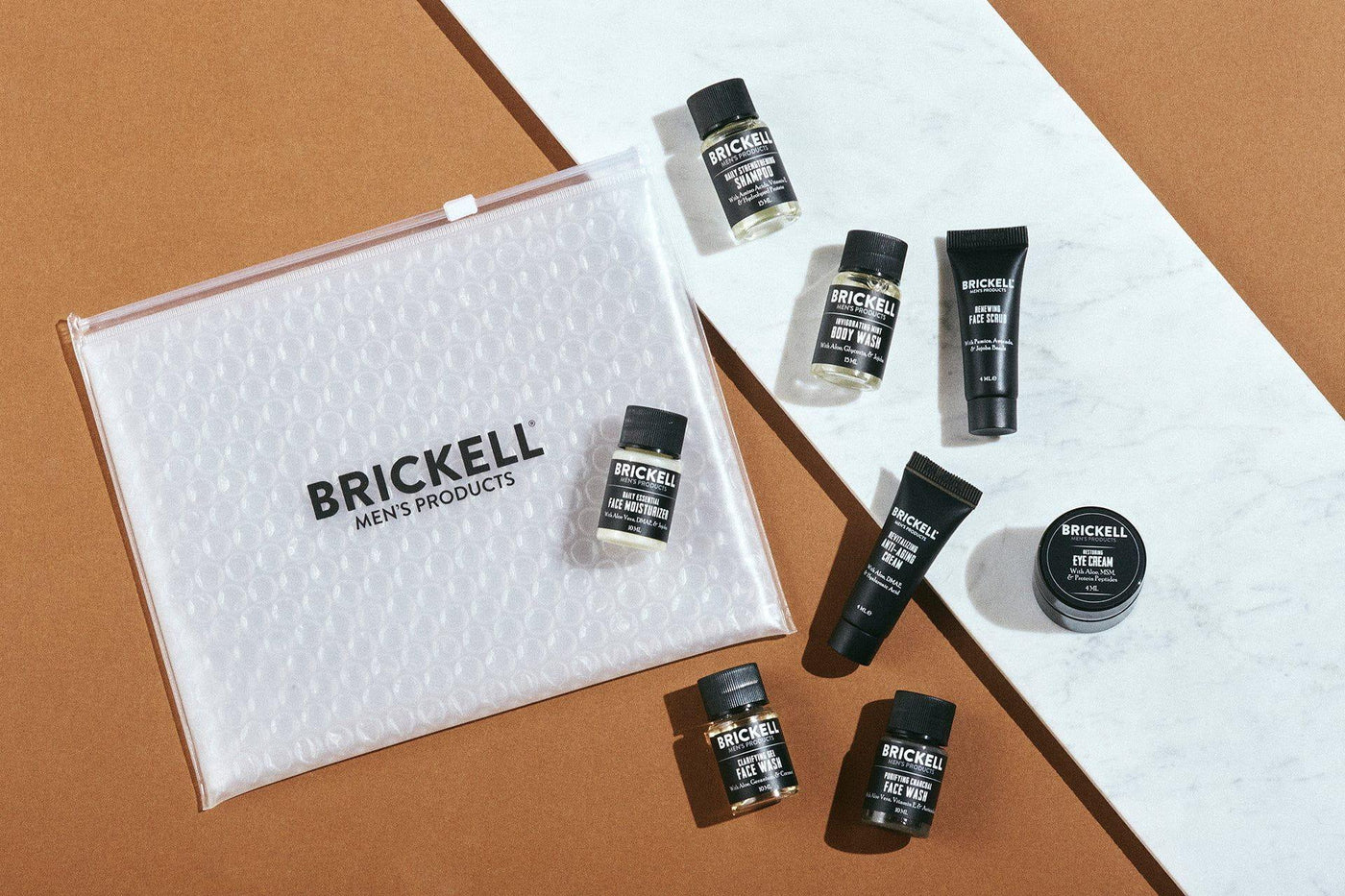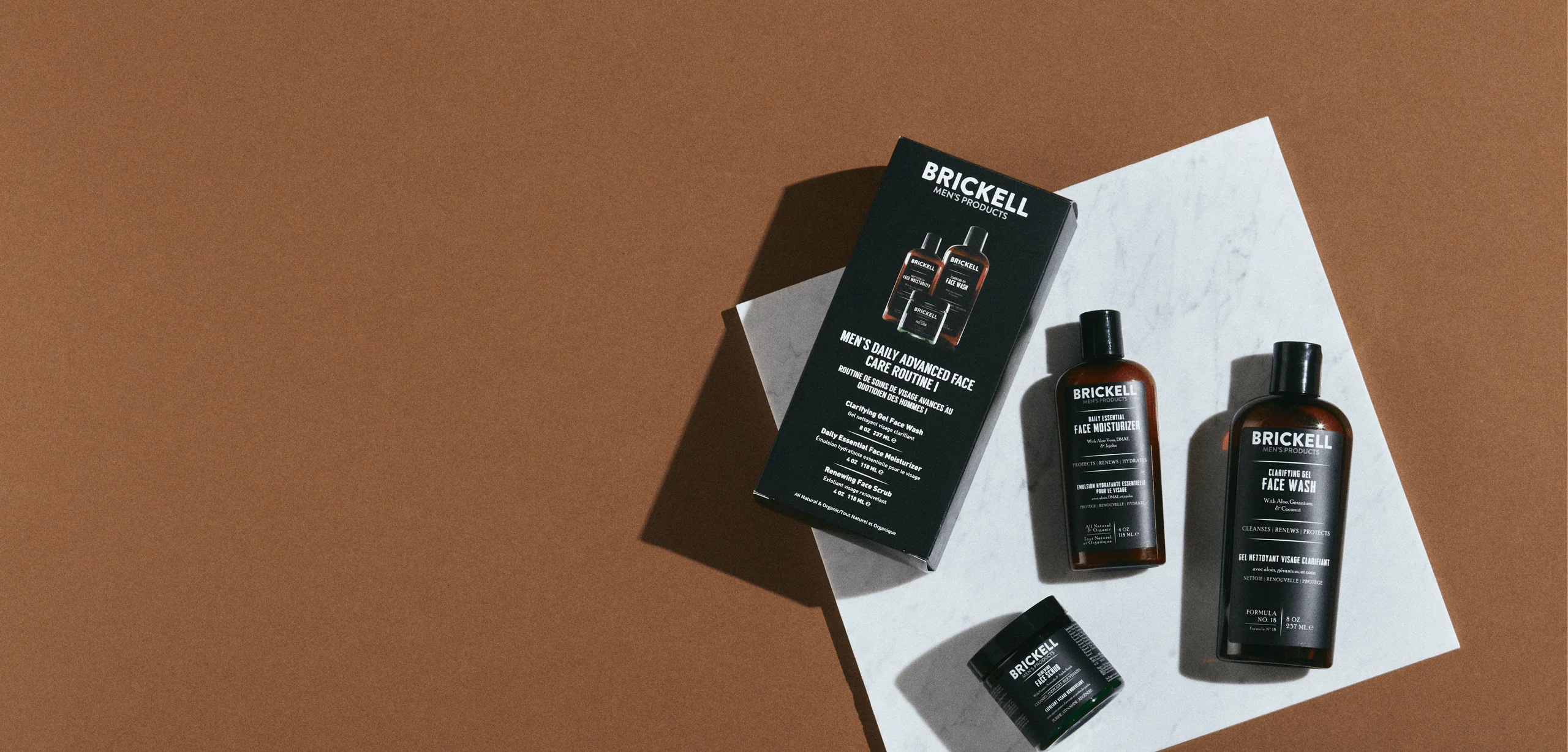The Grooming Manual
How to Stop a Receding Hairline in Its Tracks

Listen - hair loss can seem like a pretty terrible thing for any guy. Of course, it’s totally natural - and you have no reason to feel bad about it. But it can still be a serious blow to confidence and self-esteem for many men, particularly if you don’t know how to handle it.
It’s more common than you might think. According to The American Hair Loss Association, more than two-thirds of American men will experience some degree of hair loss by age 35 - and that number jumps to 85% in men over the age of 50. That’s most men (again, normal!).
But even so, there’s a lot you can do to deal with a receding hairline and even slow its progress. Here’s what you should know.
1. Work On Your Scalp Health
Some hair loss or hair thinning can occur simply because your scalp isn’t a healthy environment for your hair. Your scalp is essentially the soil from which your hair grows - and if that soil doesn’t have the water and nutrients it needs, your hair will die. It’s straightforward biology.
The problem, though, is that a lot of guys don’t pay attention to their scalp health - and this can lead to some major problems. The most common concern is a dry, stripped scalp with a buildup of dead skin cells. This is a lot for your hair to work through.
A dry scalp covered with dead skin cause a considerable amount of tightness. This is physically tough for your hair to grow through, and the hair can be weaker and more fragile if it’s dry and stripped of oils.
Like the skin on the rest of your body, the skin on your scalp has a microbiome. Consisting of good bacteria, fungus, and oils, it needs to be healthy and balanced for your hair to thrive.
The problem? A lot of day-to-day habits and environmental factors can throw off this microbiome, including:
- Too-frequent showers with too-hot water
- Stripping and chemical-laden shampoo and conditioner ingredients
- Dry air
- Lack of oil and sebum
Luckily, there’s an easy remedy here. Particularly if you notice any dryness or tightness, start by washing your hair less frequently - every other day or every third day (you can still get it wet when you shower, but don’t use shampoo every time).
You should also nix any products that include pore-clogging waxes, sulfates, parabens, or stripping detergents (more on those here).
2. Use Products with Moisturizing Ingredients
If you’re starting to notice a receding hairline - or to work preventatively - switch to moisturizing, good-for-your-scalp hair products. Look specifically for ingredients like:
- Aloe vera to moisturize, soothe, and cool scalp and strands while providing some serious vitamins.
- Hair-healthy oils like borage oil and avocado oil that encourage hair growth, strengthen strands, and reduce breakage (all of which can contribute to a receding hairline).
- Hydrolyzed wheat protein to increase the thickness of hair strands and strengthen the hair structure.
- Essential oils like peppermint and tea tree, which relieve irritation, get rid of flakes, and soothe unhappy scalp skin.
All these ingredients can be found in our Daily Strengthening Shampoo and Revitalizing Hair & Scalp Conditioner.
3. Skip the Hot Tools
If you use a hot tool regularly, it could be contributing to hair breakage and hair loss. These tools compromise the integrity of individual strands of hair, stripping away natural oils and proteins by breaking down their hydrogen bonds.
You don't have to skip using these tools altogether. But there are ways to use them without causing so much damage. For starters:
- Wait until your hair is completely dry before you use a styling tool.
- If you can adjust the temperature on your tools, you should lower it - particularly if you have finer hair. If you can’t adjust the temperature, consider a new tool that gives you this option.
- Use products that protect your hair from heat.
4. Talk to Your Doctor About Hair Loss
What if you already follow the best hair care routine for men and have made lifestyle choices that promote healthy hair growth, but you're still feeling frustrated with hair loss?
There are medical approaches to dealing with a receding hair line that you can discuss with your doctor. On the more invasive end of the spectrum are hair transplants and stem cell treatments - but these can be costly and involve some downtime for recovery.
An alternative is low-level laser therapy, a non-invasive treatment that uses lasers to increase circulation and stimulate hair growth. It’s not a one-and-done procedure - you’ll need to attend multiple sessions per week over many months. But studies have shown that it can work for some men.
Speak to your doctor so you can discuss your options and determine if one of these hair loss treatments is right for you.
5. Make Lifestyle Choices that Promote Healthy Hair
A lot of things can make a receding hairline worse, including:
- Anxiety
- Stress
- Illness
- Pollution
- Smoking
- Poor eating choices
While you may not be able to eliminate some of these completely, could you cut back?
Regular exercise can help curb anxiety and stress for many men. Making an effort to quit smoking is a decision that will improve your health in many ways, not just your hair health. And choosing a balanced diet is better for your whole body, beyond your hair and scalp.
6. Try a Complementary Hairstyle
There’s no way to fully hide a thinning hairline, but certain hairstyles - like slick-back looks or a pompadour - only make it appear worse.
If you rock one of these looks, it may be time to visit your barber and ask for something that will complement your new hair reality. This can include an undercut or a style that allows you to wear your hair forward (you can get some hairstyle ideas here).
Ready to get started with some hair products that will help? You can find a complete starter kit here.


